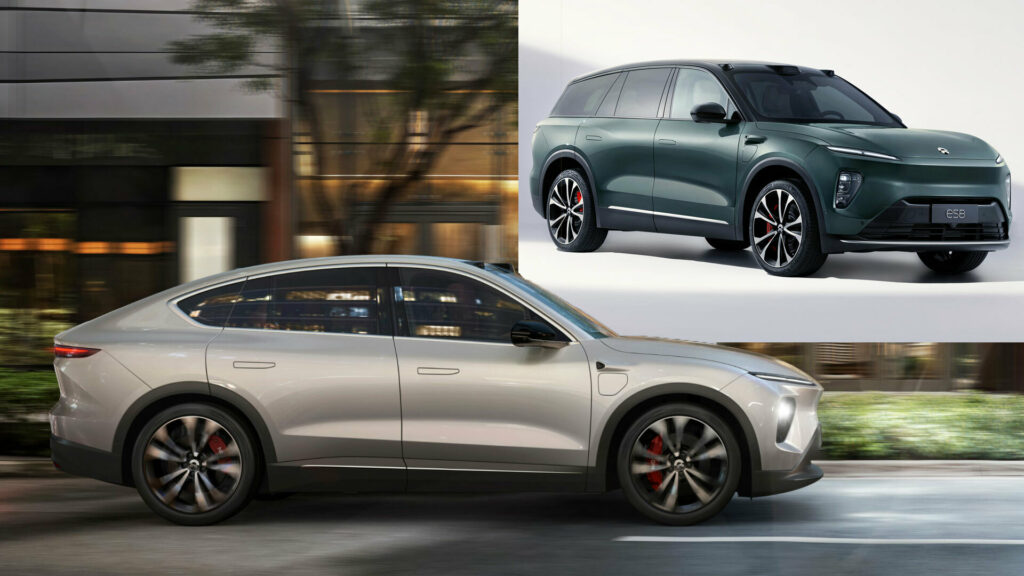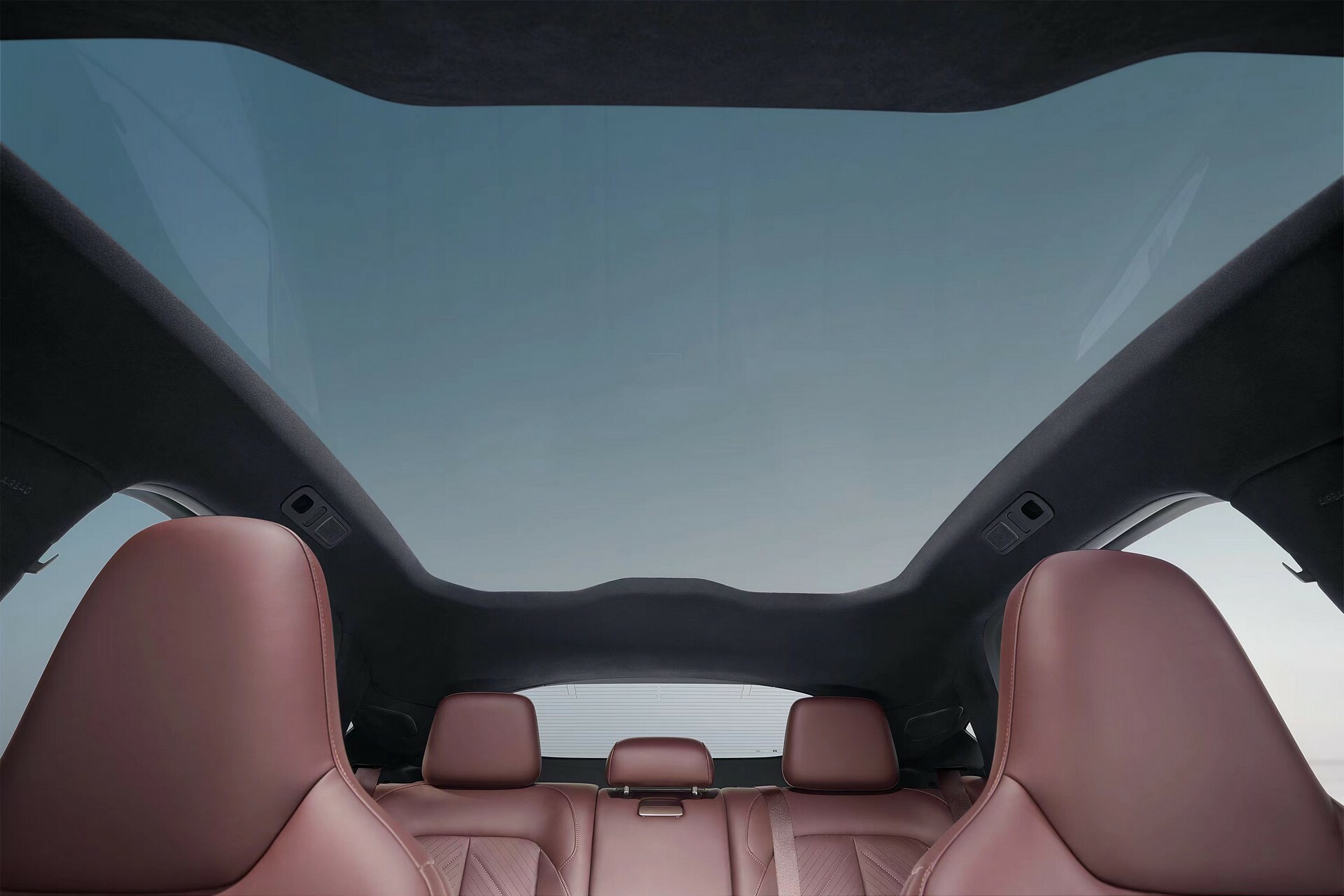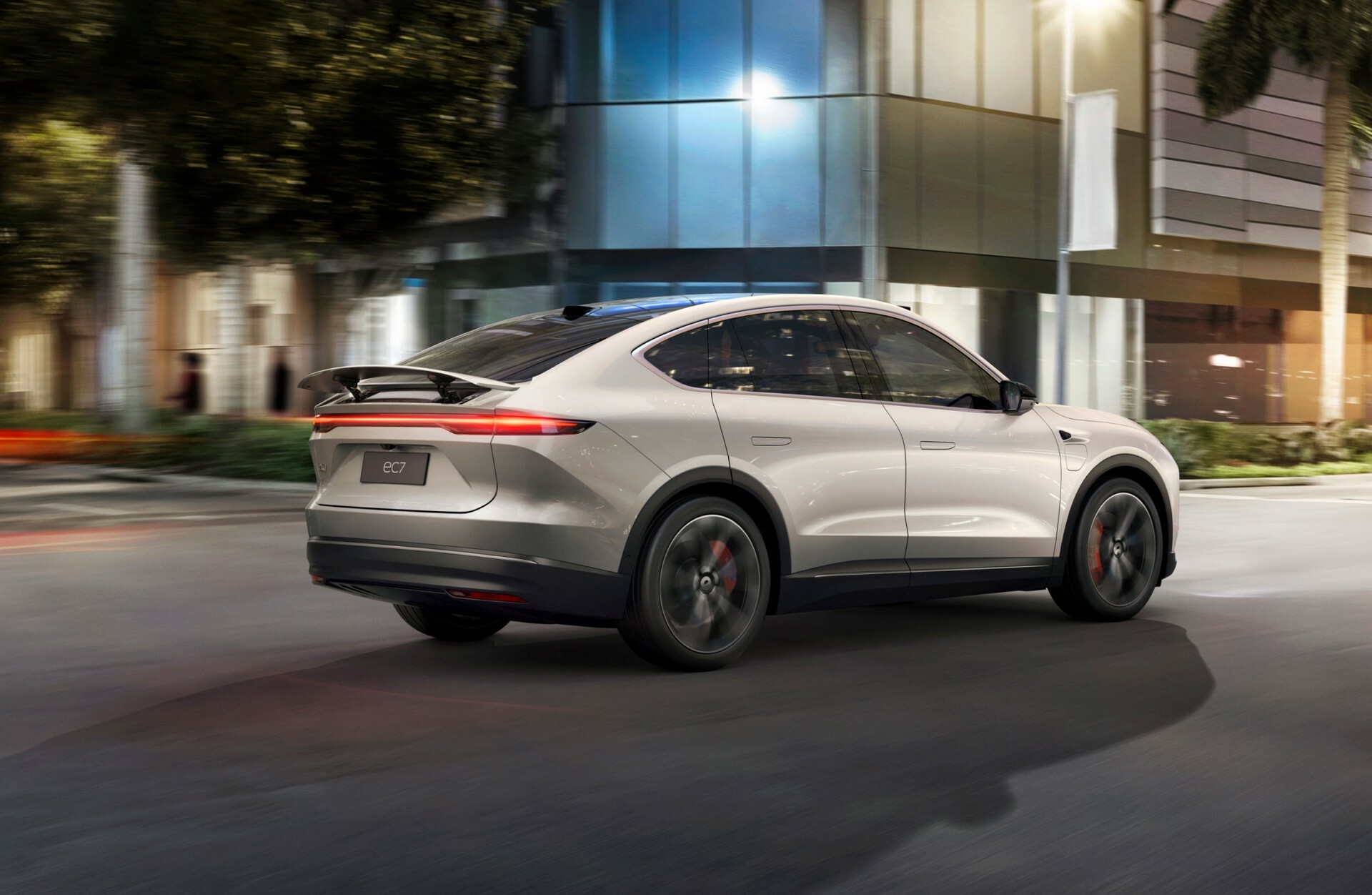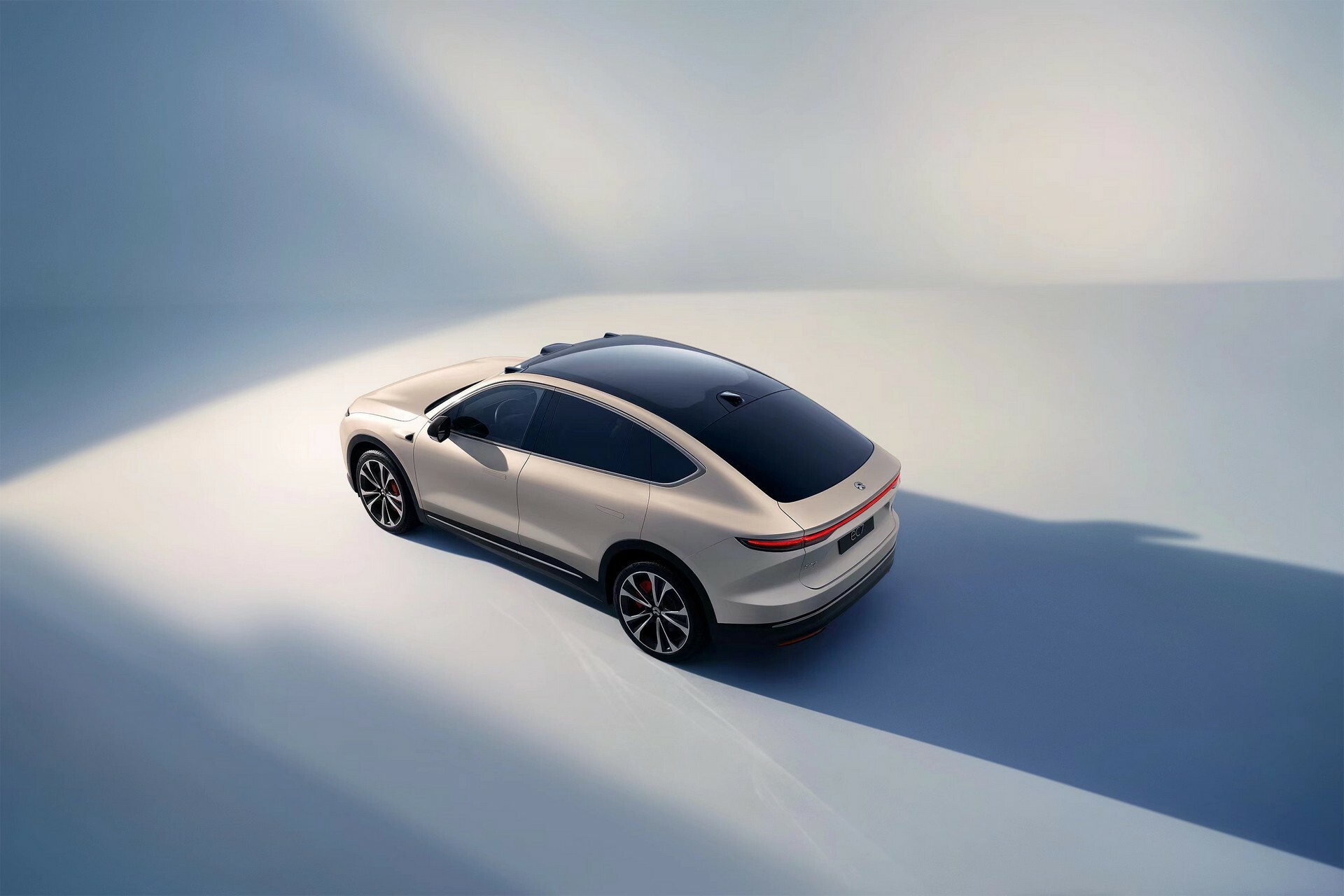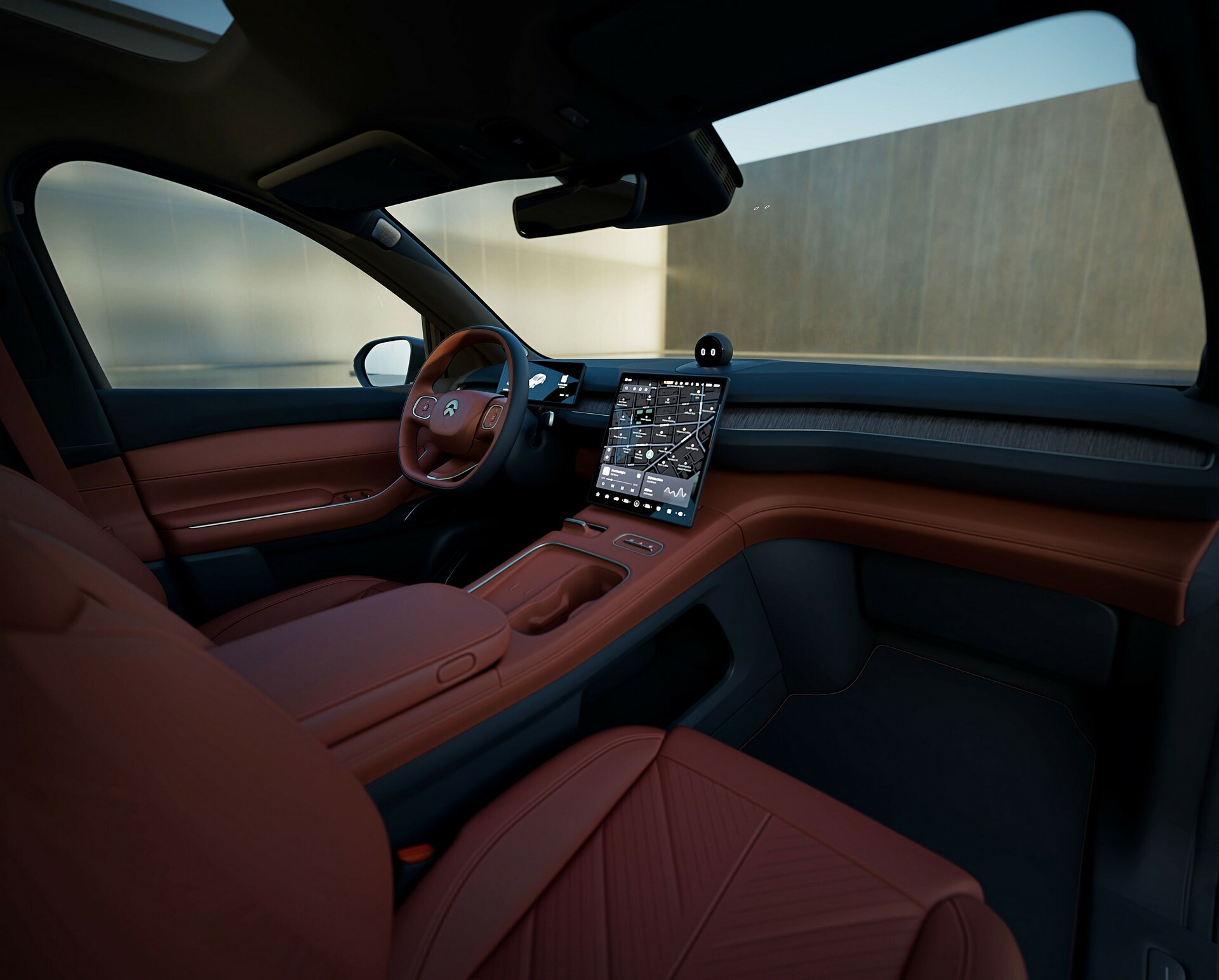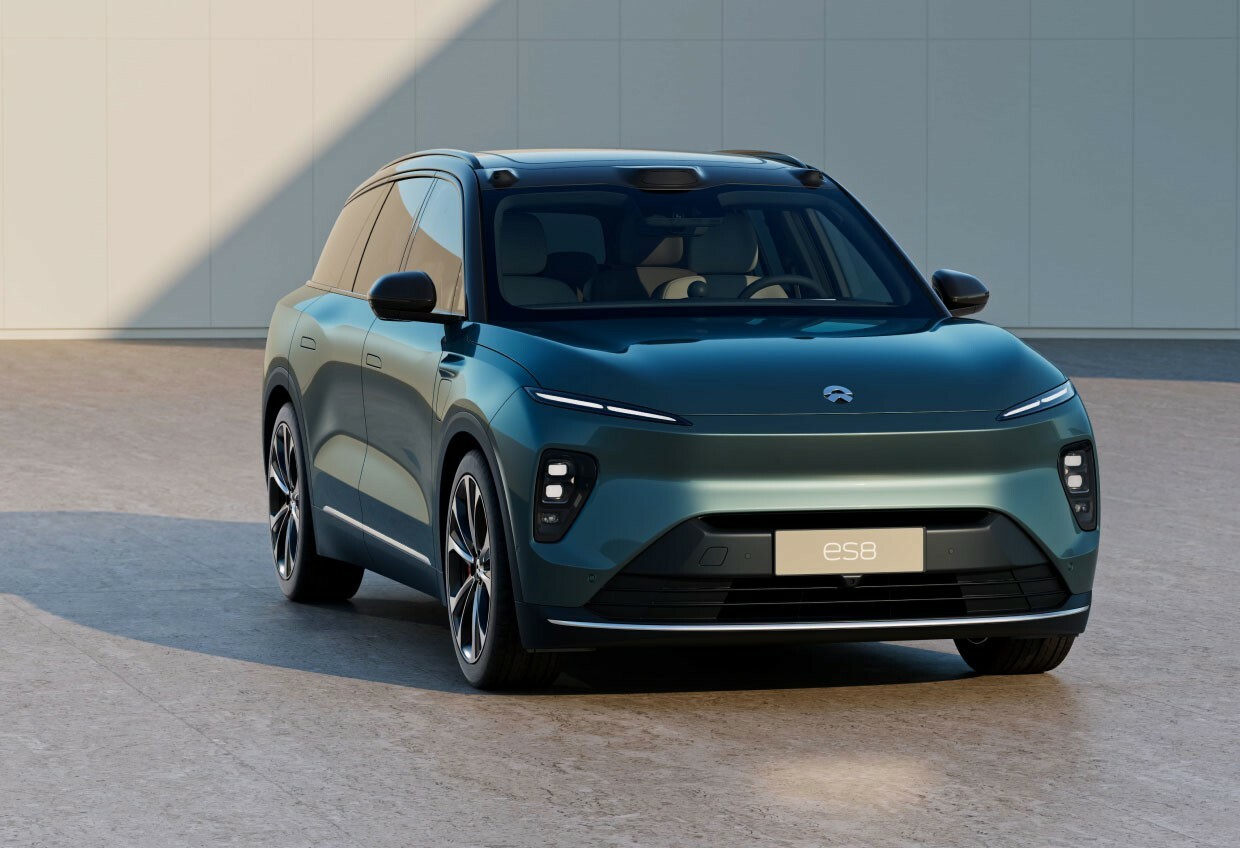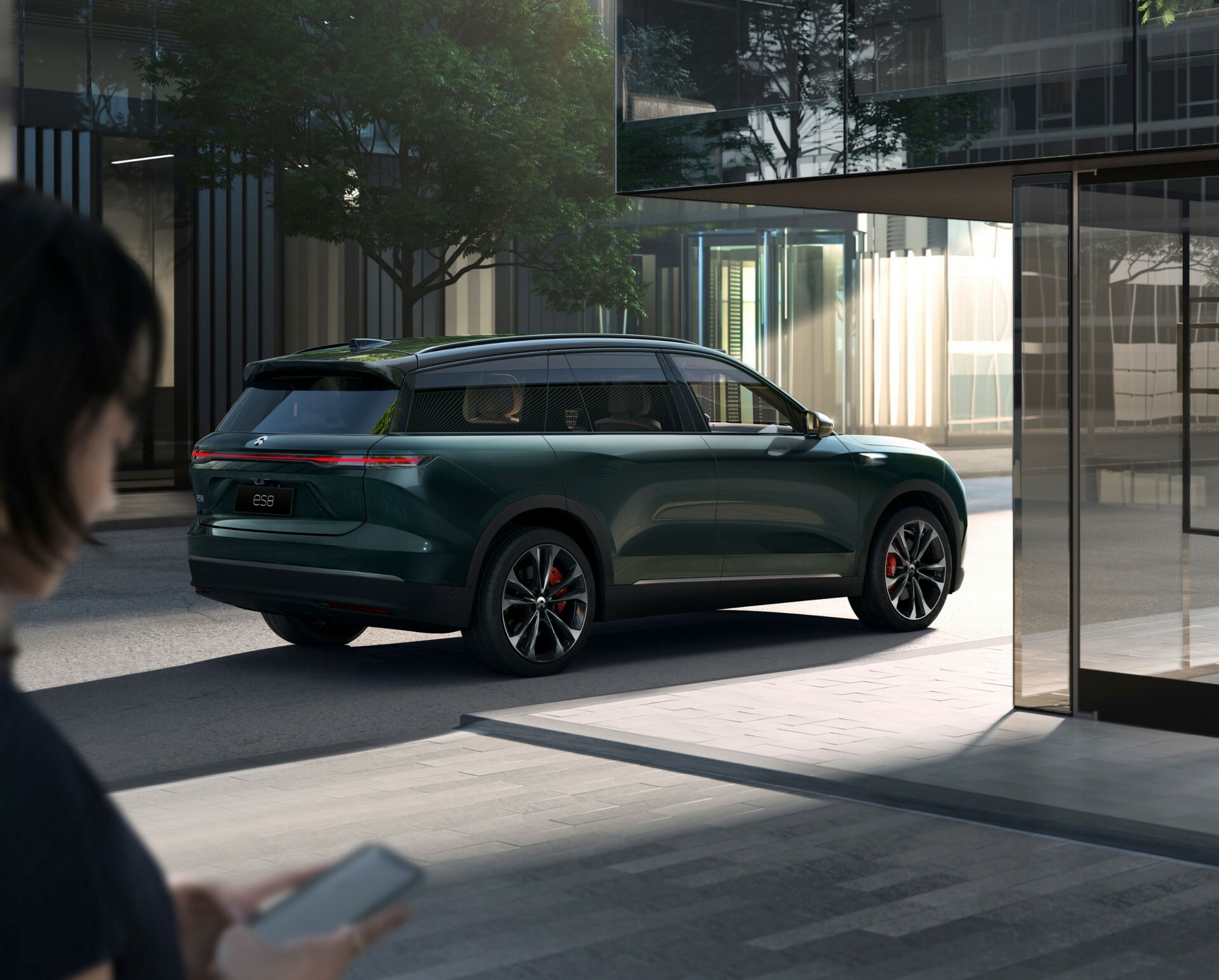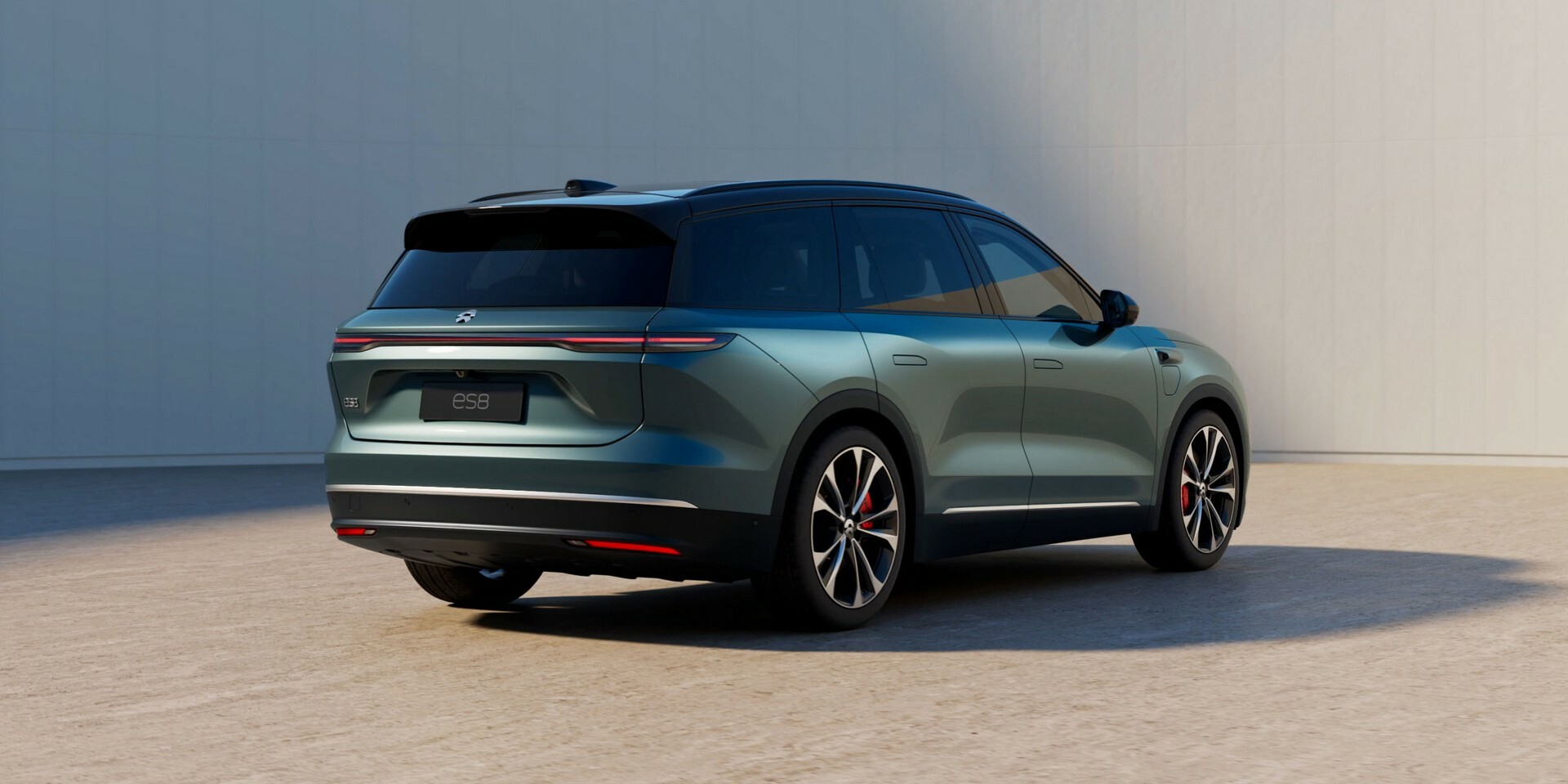Nio is one of China’s more interesting automakers and the company has unveiled the new EC7 as well as the redesigned ES8.
The EC7 is being billed as a “mid-large flagship coupe SUV” that sports a drag coefficient as low as 0.23. The company says this gives the model the lowest drag coefficient of any crossover in the world.
In order to hit that figure, the EC7 features a streamlined design with flush-mounted door handles as well as a rakish windscreen that flows into a sloping roof. The model also has an active rear wing, which is a first for the automaker.
Also: Nio ES7 Electric SUV Debuts With 644 HP And Up To 528 Miles Of Range
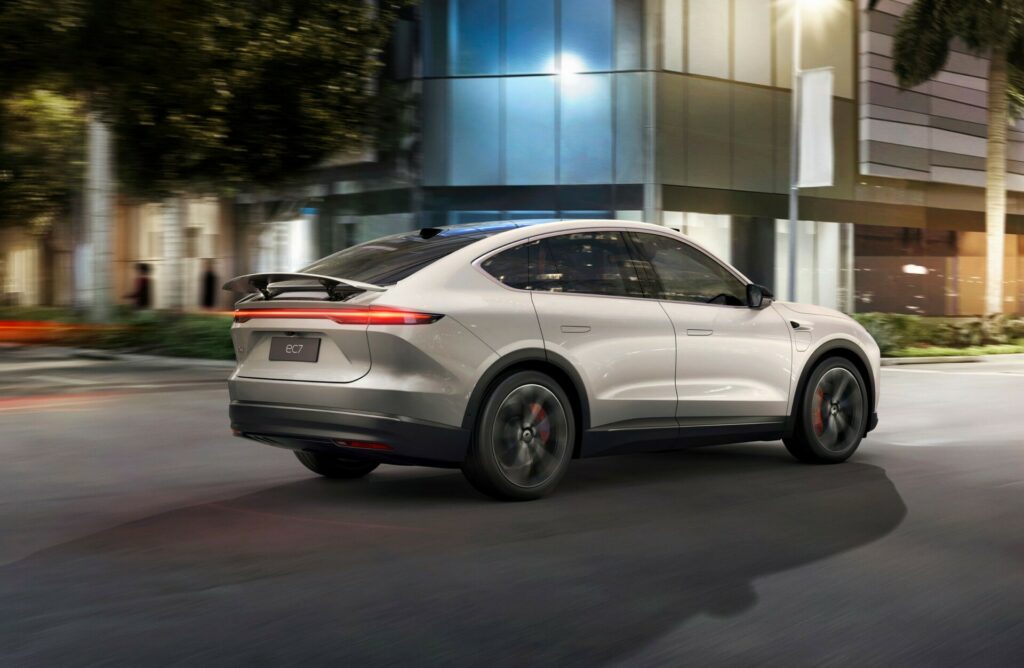
Elsewhere, there’s a large panoramic glass roof that uses double-layer sound and heat insulating glass. However, it’s more notable for having electrochromic technology which allows for five levels of transparency ranging from clear to opaque.
In terms of size, the crossover measures 195.6 inches (4,968 mm) long, 77.7 inches (1,974 mm) wide, and 67.5 inches (1,714 mm) tall with a wheelbase that spans 116.5 inches (2,960 mm). To put those numbers into perspective, the EC7 is slightly longer, narrower, and taller than the BMW X6.
Moving into the cabin, the entry-level variant comes nicely equipped with a 10.2-inch digital instrument cluster and a 12.8-inch infotainment system. They’re joined by perforated synthetic leather front seats with heating, ventilation and massage functions. More notably, the crossover has a “Queen’s co-pilot” front passenger seat with a one-button comfort mode that lifts a footrest while also lowering the backrest to give its occupant a ‘zero-gravity’ feel.
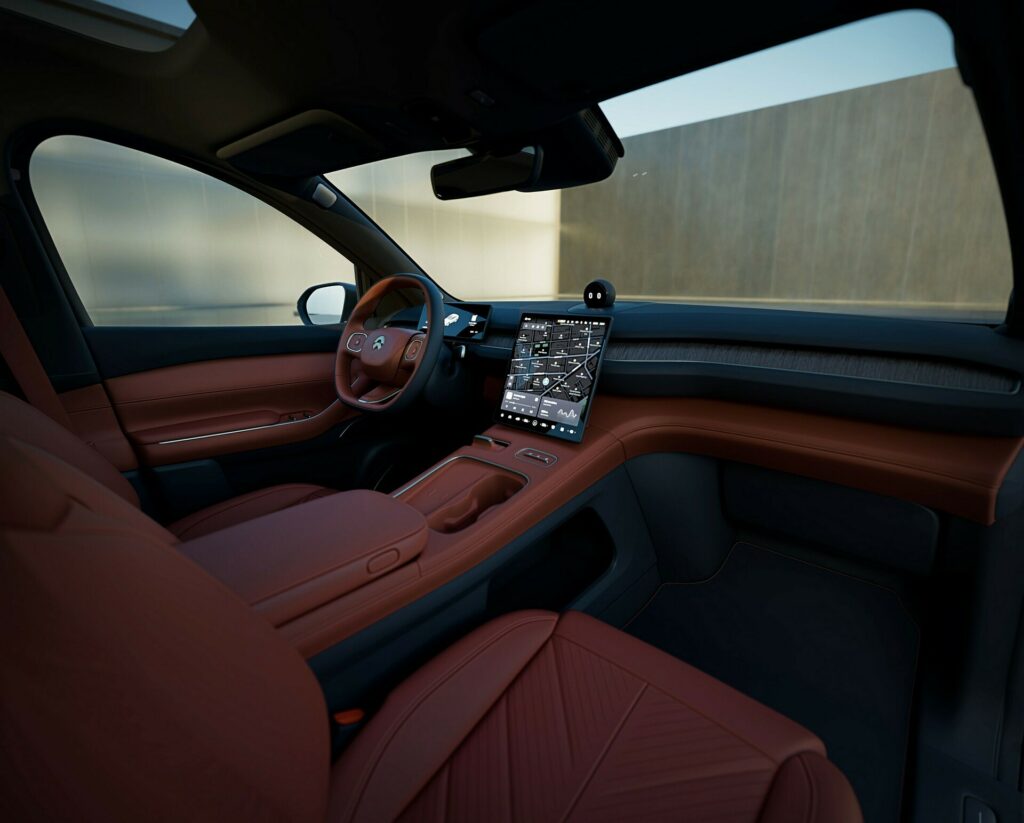
Other highlights include a tri-zone climate control system, a smart fragrance system, and a 23-speaker audio system with Dolby Atmos technology. Rear seat passengers haven’t been forgotten as they’ll find a 6.6-inch display and heated seats with power recline.
On the performance front, customers can get 75, 100, and 150 kWh battery packs that offer ranges of up to 304 miles (490 km), 395 miles (635 km), and 584 miles (940 km), respectively, in the CLTC cycle. Regardless of which battery is selected, the crossover coupe has a dual-motor all-wheel drive system producing a combined output of 644 hp (480 kW / 653 PS) and 626 lb-ft (850 Nm) of torque. This enables the model to hit 62 mph (100 km/h) in as little as 3.8 seconds.
The EC7 is now available to order and deliveries are slated to begin in May. Pricing starts at ¥488,000 ($70,113) and climbs to ¥546,000 ($78,447) for models equipped with the 100 kWh battery pack. If that’s too steep, Nio offers a battery-as-a-service option that reduces the price tag to ¥418,000 ($60,056).
ES8
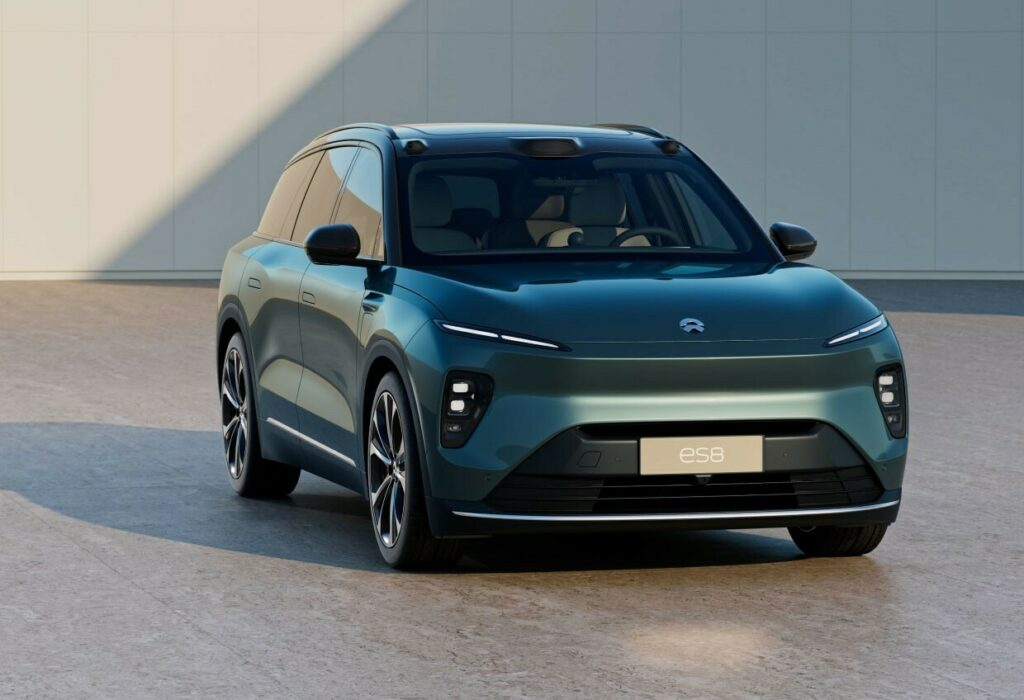
The ES8, on the other hand, receives an evolutionary redesign that features a streamlined front fascia, soft curves, and a more minimalist greenhouse. They’re joined by an elegant rear end that sports a full-width light bar.
The model grows in size as it now measures 200.7 inches (5,099 mm) long, 78.3 inches (1,989 mm) wide, and 68.9 inches (1,750 mm) tall with a wheelbase that spans 120.9 inches (3,070 mm). That means the model is 3 inches (77 mm) longer than its predecessor and an extra 2.4 inches (60 mm) can be found between the wheels.
The interior is the star of the show as the ES8 offers four executive seats, a rear center console, and a third-row. The rest of the cabin largely echoes the EC7 as there’s a Queen’s co-pilot front passenger seat as well as the aforementioned screens and 23-speaker audio system.
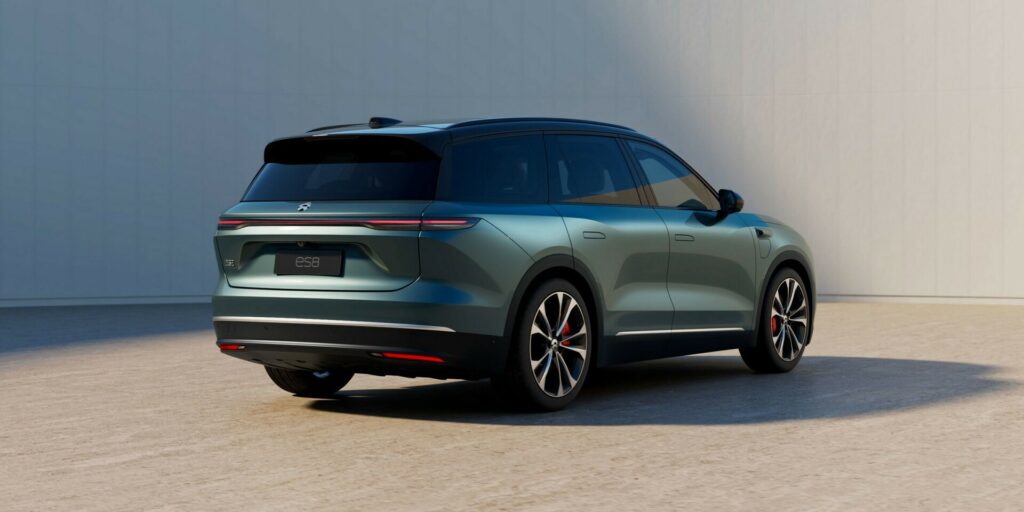
The déjà vu continues with the powertrain as the ES8 features a dual-motor all-wheel drive system developing 644 hp (480 kW / 653 PS) and 626 lb-ft (850 Nm) of torque. While the numbers carryover from the EC7, the three-row crossover is slower as the dash to 62 mph (100 km/h) takes 4.1 seconds. The model also offers 75 and 100 kWh battery packs with a range of up to 376 miles (605 km).
Pricing begins at ¥528,000 ($75,860) with the 75 kWh battery and ¥586,000 ($84,194) with the 100 kWh battery. There’s also the battery-as-a-service option, which drops the cost to ¥478,000 ($68,677). The crossover is currently available to order and deliveries are expected to begin in June.
Both models are based on the company’s second-generation platform and feature intelligent multi-beam headlights, which can project patterns as well as animations. More importantly, the crossovers have 33 high-performance sensors including LiDAR that allows for high-levels of automation. Speaking of the latter, Nio will launch a “pilot power swapping on the highway” function that will allow the vehicles to “automatically plan the route for [the] battery swap, drive to the power swap station through intelligent navigation, automatically complete the power swap, and automatically drive out of the service area and back to the highway.”




